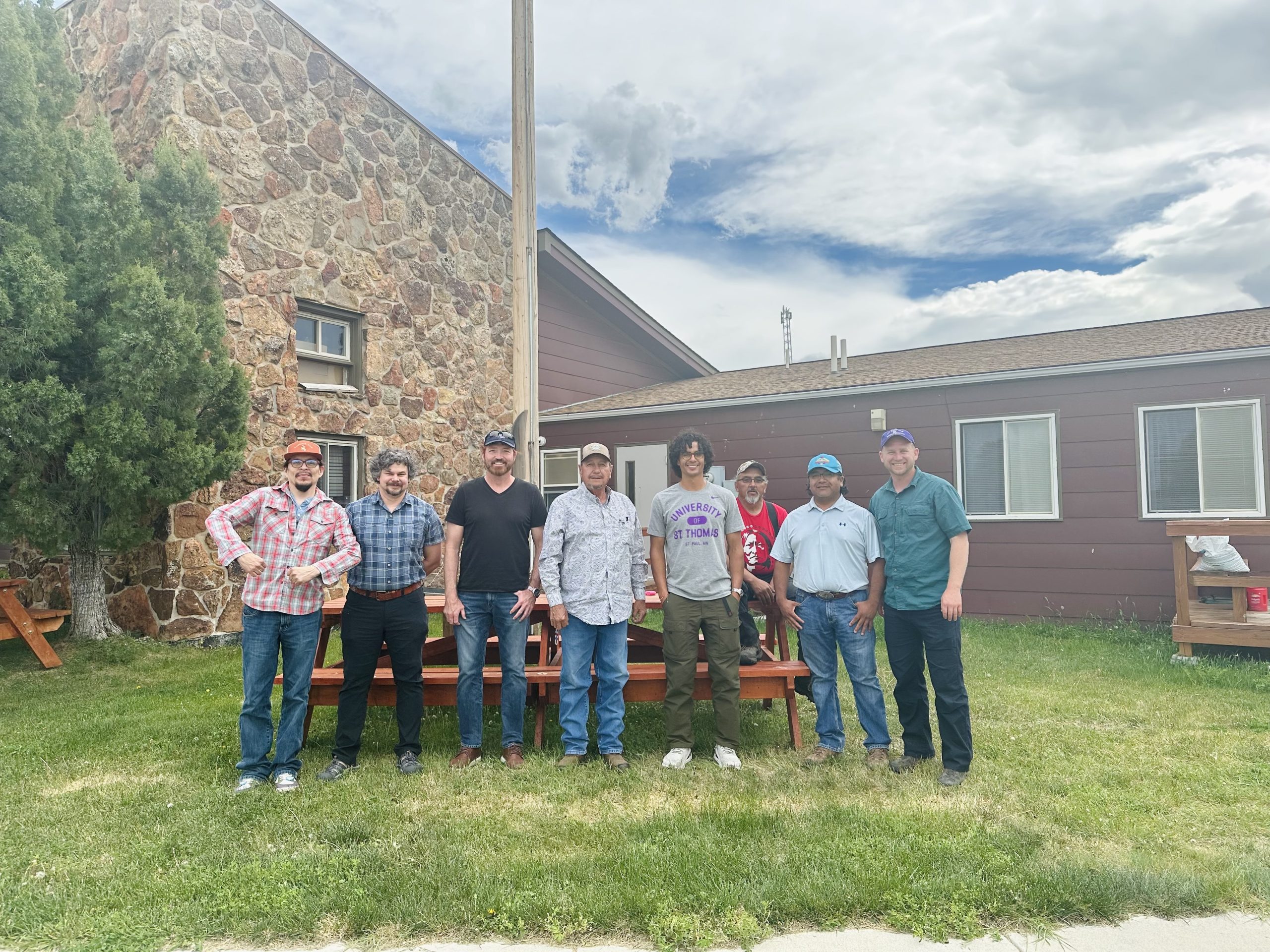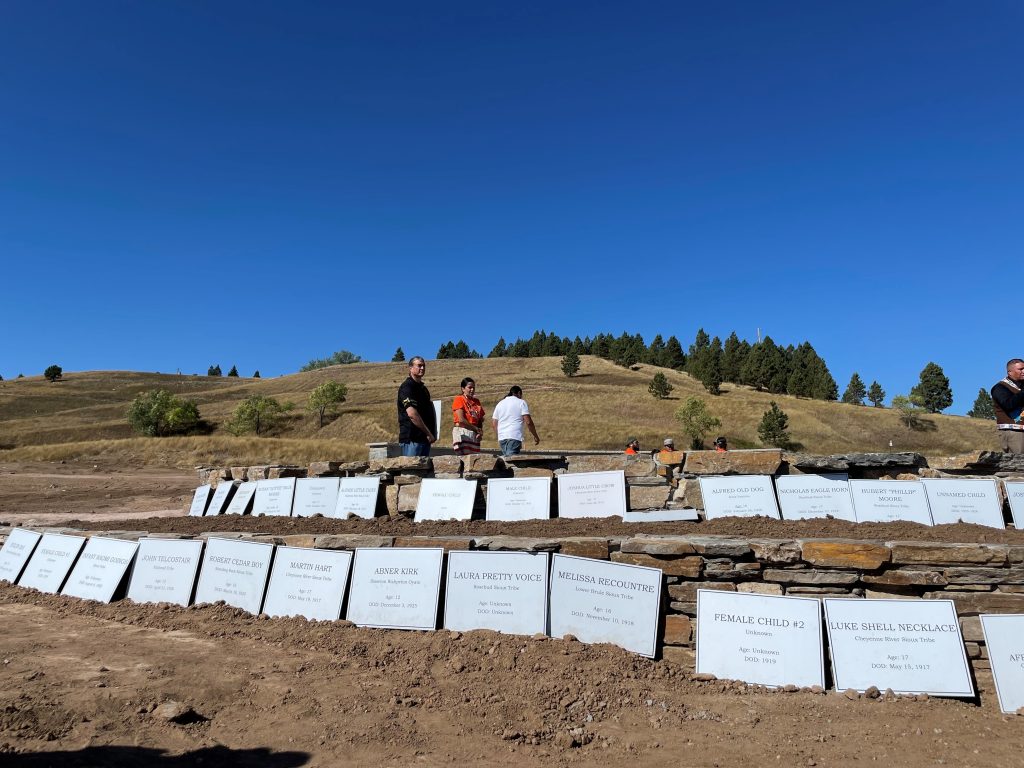Podcast: Play in new window | Download | Embed
Organizers say the issue is crucial for understanding race relations in the city.
South Dakota Public Broadcasting’s Lee Strubinger reports.
Members of the Sicangu Youth Council read the names of the children who died while attending the Rapid City Indian Boarding School. The annual ceremony starts in Sioux Park, located in west Rapid City.
Amy Sazue is the executive director of Remembering the Children—the group that puts on the annual event.
She says it’s a commitment to the children.
“Their families didn’t forget them, but this community did. This community forgot that at least 50 children died while attending a school here. That’s part of the division and differences in community members or people not understanding why things are the way they are.”
Hundreds walked about a mile from Sioux Park to the memorial site on a parcel of land just west of the boarding school property where there are unmarked graves.
In 2017, a group of researchers identified the 50 children who died while attending the school.
Borders of the boarding school stretched from Bakken Park to Canyon Lake.
Researchers also discovered a congressional land transfer moved a large swath of the land along Rapid Creek from tribal control to churches, schools and the National Guard.
Heather Dawn Thompson was one of the researchers on the project.
“Folks didn’t even bother to write down their names when they passed away or let their families know what had happened to them. By being able to share this history together, we’re able to not only honor and remember those children, but also move forward in a positive way forward as a community.”
The memorial site is still under development.
A sculpture will get installed in the summer of 2025.
That will kick off a series of artworks for the memorial site set to get installed during the next decade.

The team from the Eastern Shoshone Housing Authority for the Tribal Electrification Program grant. (Courtesy Eastern Shoshone Housing Authority)
The Eastern Shoshone Housing Authority received nearly $8 million in federal funds to invest in clean electricity.
Wyoming Public Radio’s Hannah Habermann has more on how it’ll help bring more solar power to the Wind River Reservation.
According to a report from the Department of Energy, more than 16 thousand tribal homes across the country were not electrified in 2022.
The Tribal Electrification Program aims to change that – with green energy.
Charles Washakie is the executive director of the Eastern Shoshone Housing Authority.
He says there’s a real need for more affordable energy infrastructure for homes.
“ We have a lot of people out there off the grid, we have like eight or nine families off the grid. Our elders, they’re on fixed income and their light bills are $300-400 a month.”
The grant was competitive.
Washakie says hundreds of tribes applied and only 13 received funding this round.
It’ll be used to purchase, assemble, and install solar for homes on the Wind River Reservation.

Fellows Falls. (Courtesy Onondaga Nation)
The Onondaga Nation in New York is getting a portion of land back that was taken by the state.
Tribal representatives signed legal documents with Honeywell International Friday for the return of 1,000 acres of land, which sits within its original treaty footprint set aside in the 1790s.
The transferred is under the federal Superfund program.
According to the tribe, this is the first acreage returned to stewardship of the Nation since New York State and the U.S. government broke a treaty, which originally set aside more than two million acres.
Onondaga Chief Sid Hill says this is a small, but important step for them, and for the Indigenous land back movement across the U.S.
Get National Native News delivered to your inbox daily and stay up-to-date on the 2024 Native Vote. Sign up for our daily newsletter today.



